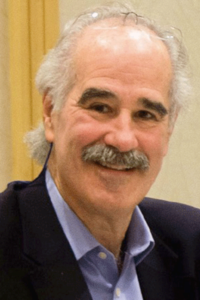In the 99 years since the fundamental discovery of insulin by Frederick G. Banting, Charles H. Best, and John MacLeod, tremendous progress has been made in understanding the complexities of diabetes, including a number of new advances in the past year.
Three distinguished presenters revisited some of those advances during one of the most popular sessions each year at the Scientific Sessions. The symposium, The Year in Review—Highlights of the Past Year in Basic, Translational, and Clinical Science, can be viewed by registered meeting attendees at ADA2020.org through September 10, 2020. If you haven’t registered for the Virtual 80th Scientific Sessions, register today to access all of the valuable meeting content.
“This session is like a data blitz—in a short space of time, you can catch up on key and important discoveries that you might have missed over the past 12 months,” said Lora K. Heisler, PhD, who reviewed translational science highlights during the symposium.
Alan Saltiel, PhD, reviewed basic science highlights and David M. Nathan, MD, revisited clinical science highlights. Julio Rosenstock, MD, chaired the symposium.

Basic Science
Dr. Saltiel, Professor of Medicine and Pharmacology and Director of the Institute of Diabetes and Metabolic Health at the University of California, San Diego, examined basic science research areas where progress has been made in the last year. One of those research areas concerns the intrinsic signals that control energy expenditure, as there have been a handful of recent papers about nutritional signals, especially amino acids.
“The role of amino acids in metabolism has become a hot area, particularly regarding changes in mitochondrial function,” Dr. Saltiel said. “Three exciting papers have shed new light on the nature of these regulatory events.”
Dr. Saltiel also discussed recent research into inflammation and obesity.
“Our field has worked on this now for more than 20 years, yet numerous questions and controversy remains,” Dr. Saltiel said. “Is inflammation a crucial player in regulating metabolism, insulin sensitivity, and energy expenditure, or is it just an afterthought?”
That question continues to challenge researchers, but new insights indicate that the issue is more complex than previously thought.
“Studies continue about the nature of activation of the innate immune system in obesity. I’ll discuss a paper that’s about a subset of immune cells and how they respond to the obese milieu, revealing some surprises about how they are regulated and what they do,” Dr. Saltiel said.

Translational Science
“A key question facing the diabetes community is related to recent reports of an association between poorer COVID-19 prognosis and type 2 diabetes. I’ll discuss a large, retrospective multicenter study investigating blood glucose control and COVID-19 outcomes in patients with pre-existing type 2 diabetes,” said Dr. Heisler, Chair in Human Nutrition in the Rowett Institute at the University of Aberdeen, United Kingdom.
Dr. Heisler also reviewed new discoveries about the brain’s regulation of glycemic control and insulin sensitivity, including a discussion about the research’s implications for novel therapeutics.
“Current frontline medications for type 2 diabetes act in peripheral tissues to improve glycemic control, insulin sensitivity, and insulin release,” Dr. Heisler said. “I’ll discuss new exciting evidence that specific neurons within the brain may be targeted to produce these effects, a discovery that can open up new types of medications for patients.”

Clinical Science
Dr. Nathan, Director of the Diabetes Center at Massachusetts General Hospital, said incremental steps have been made it the past year toward improved therapy for type 1 and type 2 diabetes.
One of the type 1 studies he reviewed focuses on smart pumps connected to a continuous glucose monitor, creating a hybrid closed loop system in which the pump automatically adjusts basal insulin infusion rates. Patients still choose pre-meal boluses. Not quite an artificial pancreas, the hybrid device is now commercially available.
Dr. Nathan also reviewed recent research related to glucagon-like peptide-1 (GLP-1) receptor agonists and sodium-glucose co-transporter 2 (SGLT2) inhibitors.
“Diabetic nephropathy is one of the most feared complications of diabetes, and at least one of the SGLT2 inhibitors seems to have a selective benefit so that for people who have some kidney disease already, these drugs will slow the further progression,” he said.
Dr. Nathan also discussed how a large population of diabetes patients, particularly type 2 patients in the U.S., do not reach the combined consensus goals for A1C levels, blood pressure control, and lipid control.
“Unfortunately, we’ve leveled out in terms of our success despite great efforts on the part of clinicians, and especially on the part of patients to achieve these goals,” he said.
VIEW THIS PRESENTATION
Already registered?
View this presentation at ADA2020.org
Not yet registered?
Register now to access all presentations from the Virtual 80th Scientific Sessions